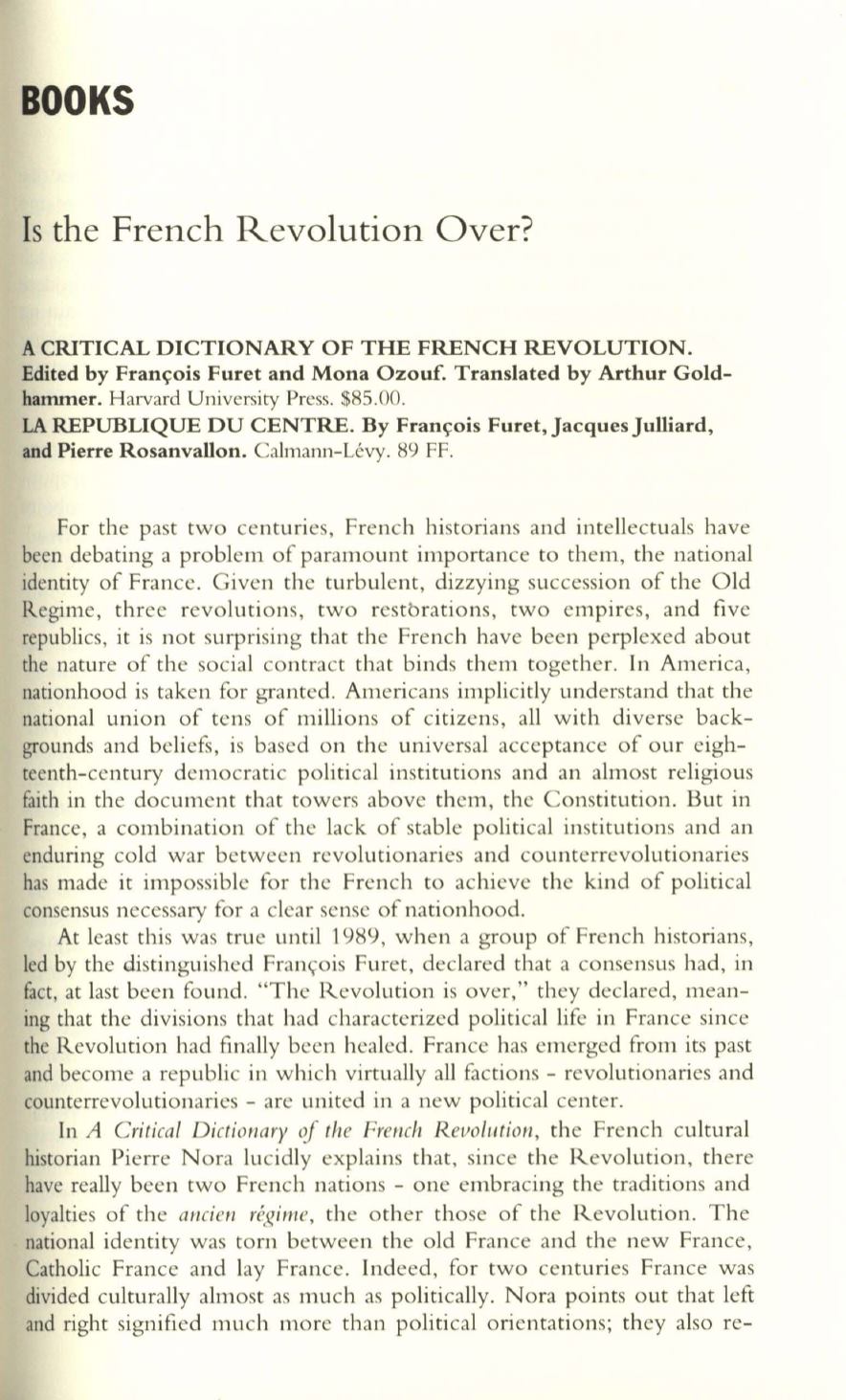
BOOKS
Is the French Revolution Over?
A
CRITICAL DICTIONARY OF THE FRENCH REVOLUTION.
Edited
by
Fran~ois
Furet and Mona Ozouf. Translated
by
Arthur Gold–
hammer.
Harvard University Press. $85.00.
LAREPUBLIQUE
DU CENTRE.
By
Fran~ois
Furet,jacquesjulliard,
and Pierre Rosanvallon.
Calmann-Levy. 89 FF.
For the past two centuries, French historians and intellectuals have
been debating a problem of paramount importance to them, the national
identity of France. Given the turbulent, dizzying succession of the Old
Regime, three revolutions, two restbrations, two empires, and five
republics, it is not surprising that the French have been perplexed about
the nature of the social contract that binds them together.
In
America,
nationhood is taken for granted. Americans implicitly understand that the
national union of tens of millions of citizens, all with diverse back–
grounds and beliefs, is based on the universal acceptance of our eigh–
teenth- century democra ti c political institutions and an almost religious
faith in the document that towers above them, the Constitution. But in
France, a combination of the lack of stable political institutions and an
enduring cold war between revolutionaries and counterrevolutionaries
has made it impossible for the French to achieve the kind of political
consensus necessary for a clear sense of nationhood.
At least this was true until
1989,
when a group of French historians,
led by the distinguished Franc;:ois Furet, declared that a consensus had, in
fact, at last been found. "The Revolution is over," they declared, mean–
ing that the divisions that had characterized political life in France since
the Revolution had finally been healed. France has emerged from its past
and become a republic in which virtually all factions - revolutionaries and
counterrevolutionaries - are united in a new political center.
In
A Critical Dicfiorlary oj the French Revolution,
the French cultural
historian Pierre Nora lucidly explains that, since the Revolution, there
have really been two French nations - one embracing the traditions and
loyalties of the
ancien regime,
the other those of the Revolution. The
national identity was torn between the old France and the new France,
Catholic France and lay France. Indeed, for two centuries France was
divided culturally almost as much as politically. Nora points out that left
and right signified much more than political orientations; they also re-


